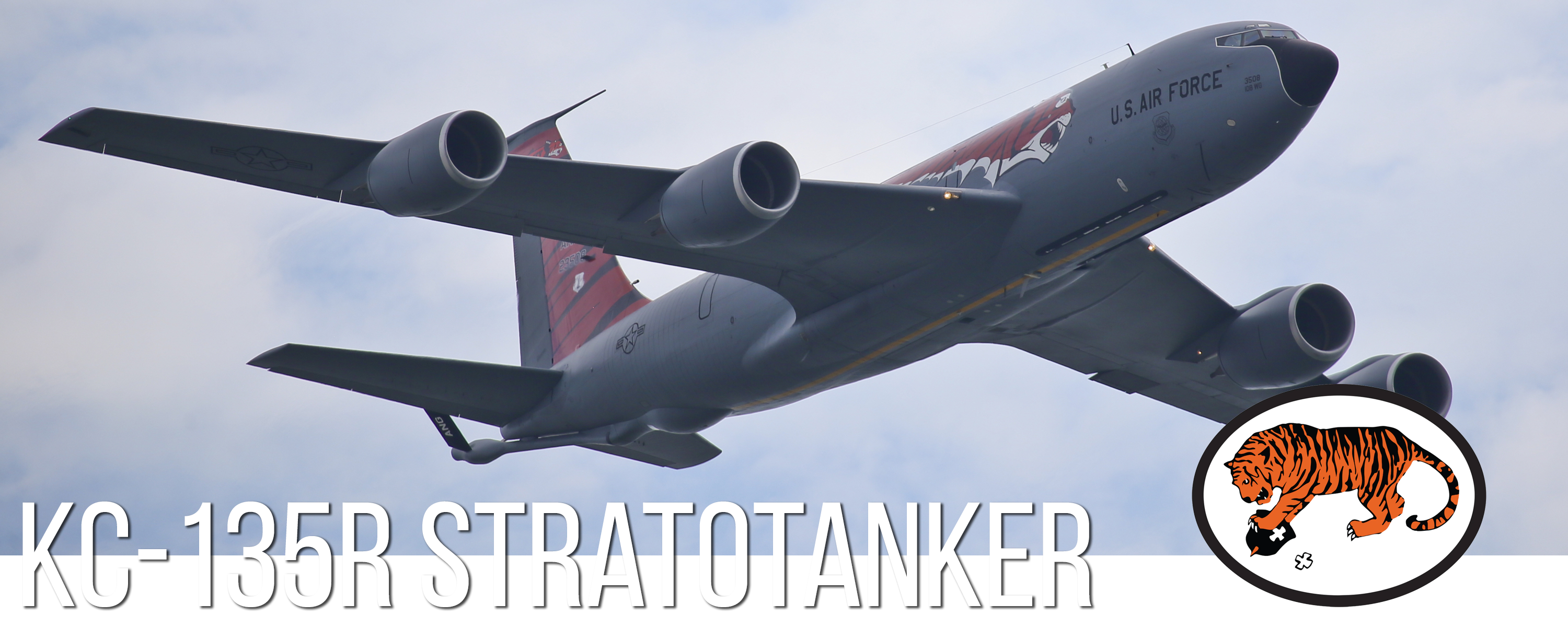
The KC-135 Stratotanker's primary mission is to refuel long range bombers and transports. It also provides aerial refueling support to Air Force, Navy, Marine Corps and allied fighter, reconnaissance, and cargo aircraft.
Features
Four turbofan/jet engines, mounted under the wings swept 35 degrees, power the KC-135. Nearly all internal fuel can be pumped through the tanker's flying boom, the KC-135's primary fuel transfer method. A special shuttlecock shaped drougue, attached to and trailed behind the flying boom, is used to refuel aircraft fitted with probes. An operator stationed in the rear of the plane controls the boom. A cargo deck above the refueling system holds passengers and cargo.
Background
The Boeing Military Aircraft Company's model 367-80 was the basic design for the commercial 707 passenger plane as well as the KC-135/A stratotanker. In 1954, the Air Force purchased the first of its future fleet of 732 aircraft. The first aircraft flew in August 1956, and the first initial production aircraft was delivered to Castle AFB, California, in June 1957. The last KC-135 was delivered to the Air Force in 1965.
In modification programs designed to keep the KC-135 flying and refueling into the next century, Air National Guard and Air Force Reserve Stratotankers were retrofitted with Pratt and Whitney TF-33-PW-102 engines. The re-engined tanker, designated KC-135/E, has 30% more thrust, is 16% more fuel efficient, and can carry 33% more fuel then the "A" model.
The KC-135 tanker fleet made an invaluable contribution to the success of Operation Desert Storm in the Persian Gulf, flying around-the-clock missions to maintain operability of allied warplanes. The Air National Guard and Air Force Reserve provide 33% of Air Force refueling requirements of bomber, fighter, cargo, reconnaissance forces, as well as the needs of the Navy, Marines, and allied nations.
General Characteristics
Primary Function: Aerial Refueling
Builder: Boeing Military Airplanes
Power Plant: Four Pratt & Whitney TF-33-PW-102 turbofans
Thrust: 16,000 per engine
Length: 136 Feet, 3 Inches
Height: 38 Feet, 4 Inches
Wingspan: 130 Feet, 10 Inches
Basic Empty Weight: 115,000 pounds
Cargo Capacity: 6 pallets or 36,000 pounds
Maximum Takeoff Weight: 301,600 pounds
Fuel Load 28,708 gallons @ 6.5 gallons/pound - 186,600 pounds carried in 10 separate tanks
Speed: Normal at cruise altitude 520 mph, Max speed at sea level .9 mach/600 KIAS
Passengers: 50
Crew: 4